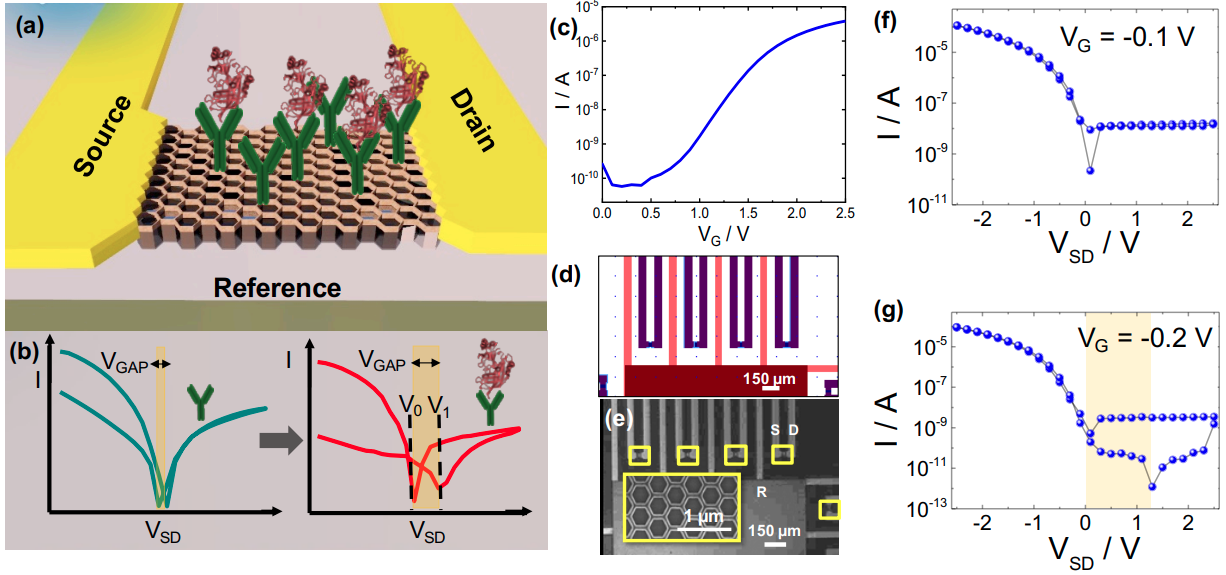The advancements in neuromorphic computing have unveiled novel memory effects in nanoscale materials, appearing in conjunction with other phenomena, such as ion migration-based resistance switching effects. Over the past decade, these materials have demonstrated remarkable potential beyond computing, particularly in the realm of highly-sensitive chemical sensing. Three-terminal devices, i.e. Field-Effect Transistors (FETs), have emerged as pivotal components in this domain, serving as memristive biosensors and neurotransistors under suitable conditions. In this work, we highlight the utilization of one-dimensional material-based FETs for the ultrasensitive detection of biomarkers. We also illustrate how engineering the surface of these FETs with polarizable gate materials endows them with neuron-like learning capabilities. Additionally, by replacing the unipolar semiconductor channel with an ambipolar counterpart, we present devices with enhanced learning potential. The combination of memory, sensing, and learning functionalities in a compact miniaturized physical volume paves the way toward the development of Internet-of-Things (IoT) multifunctional devices capable to store and process data, while additionally responding, very efficiently, to analyte exposure, following a learning process.

The advancements in neuromorphic computing have unveiled novel memory effects in nanoscale materials, appearing in conjunction with other phenomena, such as ion migration-based resistance switching effects. Over the past decade, these materials have demonstrated remarkable potential beyond computing, particularly in the realm of highly-sensitive chemical sensing. Three-terminal devices, i.e. Field-Effect Transistors (FETs), have emerged as pivotal components in this domain, serving as memristive biosensors and neurotransistors under suitable conditions. In this work, we highlight the utilization of one-dimensional material-based FETs for the ultrasensitive detection of biomarkers. We also illustrate how engineering the surface of these FETs with polarizable gate materials endows them with neuron-like learning capabilities. Additionally, by replacing the unipolar semiconductor channel with an ambipolar counterpart, we present devices with enhanced learning potential. The combination of memory, sensing, and learning functionalities in a compact miniaturized physical volume paves the way toward the development of Internet-of-Things (IoT) multifunctional devices capable to store and process data, while additionally responding, very efficiently, to analyte exposure, following a learning process.
